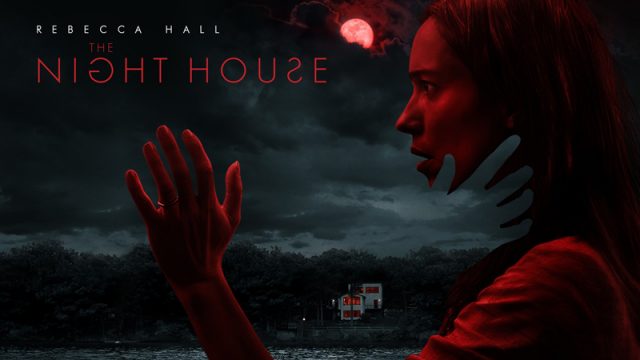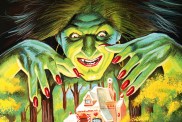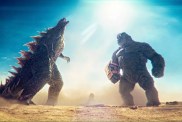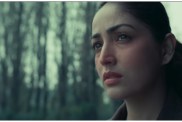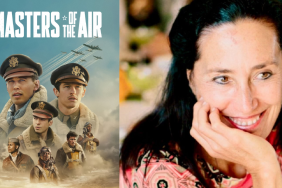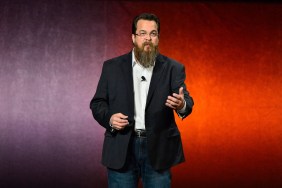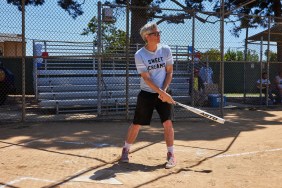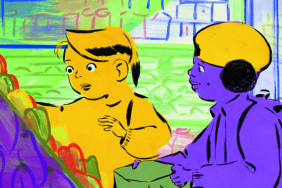Multi-award-winning composer/songwriter Ben Lovett has two unique horror film scores coming out this month. The first is Searchlight Pictures’s The Night House, starring Rebecca Hall, which releases this Friday and marks his third collaboration with The Ritual director David Bruckner. While the second, Netflix’s The Old Ways, starring Brigitte Kali Canales and Andrea Cortés, premieres on August 25.
ComingSoon was able to sit down with Lovett to discuss his approach to each score and learn more about his scoring process.
Lovett’s music can also be heard on Netflix’s original film The Ritual, starring Rafe Spall and Arsher Ali; Jim Cummings’ tragi-comedy The Wolf of Snow Hollow, starring Riki Lindhome and Robert Forster; the Duplass Brothers’ survival thriller Black Rock, starring Katie Aselton, Lake Bell and Kate Bosworth; Emma Tammi’s avant-garde western The Wind, starring Caitlin Gerard, Julia Goldani Telles and Ashley Zukerman; and more.
RELATED: The Night House Trailer Previews Searchlight’s Psychological Horror Film
Jeff Ames: Hey Ben, so you’ve got two big releases coming out this month within the next few weeks — how are you holding up?
Ben Lovett: Yeah. It’s wild they’re coming out so close together or in the case of The Night House that it’s happening at all finally after all after being delayed for so long.
Yeah, because that was supposed to be released in January, right?
Well, it premiered at Sundance in 2020. We finished the movie in a screening, you know, kamikaze dive into Sundance two Sundances ago. So, it was more of a 2019 project for us. And there’s been so much uncertainty and waiting around to see what would actually end up happening. I’ve done five other movies since The Night House, but it’s the one I’m talking about. I’ve had to reread interviews from Sundance — I mean it’s kind of been out of my system. So, getting back into it has been really fun.
Well, let’s talk about that score. What drew you to The Night House?
I have a really long history with the director, David Bruckner, and he and I had last done The Ritual together — and that was in 2017. Sometime shortly after that, he floated me the script to The Night House and said, “Read this and let me know what you think, because I think I’m really intrigued by it.” So, you know, I had the movie gestating in the back of my brain for a couple of years or at least a year and a half or so before we actually got into it. So, I was on board The Night House before they ever even started shooting. I started writing music based on concepts and imagery mentioned in the script.
In the film there’s these illusions to things like repeating patterns and new floor plans and architectural designs that are inversions of one another that sort of fold in — lots of mathematical architectural references that seemed like really interesting ideas to explore musically. The idea of, what would MC Escher as music be like? So, that was a really exciting, long-winded way of saying what originally drew me to it were these ideas that were put forth in the conceptual part of the story, but then also getting to do that with a director who puts a lot of trust in me and kind of lets me run off and do a lot of weird stuff and come back with ideas.
Any time I’m able to be part of the process from very early on and have more of a comprehensive role in the storytelling — those are always kind of the best projects.
When you’re reading the script for the first time, are you hearing the music in your head? Or are you simply processing the imagery and getting a feel for the film?
It tends to be different and it tends to be based on when I come on board a project. In the case of The Ritual, they had already shot it by the time I came on board. Basically, every shot in that film is an exterior as we follow these four guys lost in the woods with this big thing stalking them. So, you’ve got a few elemental basic principles that are there visually to help communicate an aesthetic, and you can use that as a jumping off point. So, it’s sort of like, “Well, they’re in the woods. Maybe we should use instruments made of wood!” Basic stuff. You know, like, it’s probably not a synthesizer movie!
But when reading a script, everybody imagines a different movie. You know, when you say “a house by a lake,” everybody’s going to picture a different house by a different lake. And so, some of the stuff that was the initial seeds of inspiration might have spun me off in directions to things that didn’t necessarily wind up in the movie or work once you see what the film looks like, but you’ve got to start somewhere. That stuff never feels like lost time, because you have to feel around for where the boundaries are when you’re working on something as dense and existential and metaphorical as The Night House. Sure, there’s a plot that drives your plot from A to B to C, but it’s much more a conversation about things that are way beyond that. That’s the kind of stuff I really get into.
It wasn’t really clear what this needed to sound like. I flew to set and was able to look at the monitor and see what kind of movie the camera was starting to capture; and that started to calibrate my idea of the sound.
Talk about your working relationship with David Bruckner. What continues to lure you to his projects? Is it simply a case of style matching style?
He and I met when we were both ambitious students. Not film students — we met at the University of Georgia in the late 90s when we were people who were just interested in making stuff. He’s making music videos for songs I’ve written. I’ve scored films that he’s done — we just always had a symbiotic relationship because we’ve had a similar path in this kind of punk rock, self-taught school of music and filmmaking. We both sort of learned on the job, respectively; and we’ve understood and learned how to tell stories and make movies by just constantly doing them. And because we’ve always had that in common and we kind of came up cutting our teeth on a similar timeline and a similar diet of content in movies, in a similar era. We just have a bit of a similar perspective about how to tell these stories.
The way it’s progressed is that — well, you know, for directors, they have to live with these movies for a really long time where I can hop on and furiously work for a handful of months and then I’m off to another movie. Each time we come together; it always feels new because we come into each new collaboration having sharpened our skills in other areas.
Speaking of sharpening your skills, has technology made your job easier or harder?
Well, honestly, it’s both. Any other musician or composer would know I’d be lying if I said it didn’t make my job easier in the sense of all the different advantages and ways that technology has allowed for things that wouldn’t have been possible several years ago. At the same time, that’s always met by the difficult challenges of how it enables the other people that you have to collaborate with.
For example, editing a movie has become a video game at this point. Like, they don’t really have to stop changing the picture until you release it — and Bruckner will! He and I are similar in that, given enough rope, we’ll hang ourselves. We’ll work endlessly on this stuff until you just come into a room and take it away. We never know if we’re making it better, we just sit there obsessively trying to see all the different things we can do with the film. “I’ll put this there!” “Well, why don’t we just move this whole scene over here?”
That curiosity to tinker with it and try to figure out what all you can do to tell the story in a different way, you know, we’ll obsess over that stuff forever. And so, the fact that they can keep moving things around and it never really have the picture locked is always really challenging when you’re working musically, because music is math and there’s timing involved. When you want a thing to hit this and this and this, and then they suddenly go, “Oh yeah, that’s like five seconds later now,” it’s a one step forward, two steps back process.
RELATED: Candyman Featurette: Nia DaCosta & Jordan Peele on Bringing the Urban Legend to Life
You’re also working on The Old ways, which is another horror movie that looks absolutely terrifying. What can you tell us about your score for that film and how does it differ from The Night House?
Well, that film is a four person, very kind of controlled environment film, and it’s entirely set in Mexico with an all Hispanic cast. About the only thing that those two movies have in common is there’s a female lead and they’re in the same genre. But they were very, very different kinds of stories. The Old Ways is about a character re-exploring her roots and her heritage and where she comes from and feels very detached from. There’s a lot of themes about family and disassociation from culture and where you belong in the world.
I was never going to set out to try and write traditional Mexican folk music. But it was an exciting opportunity to work with specialists and work with people that specialize in this particular music style; and bringing in instruments and instrumentalists who specialize in traditional instrumentation and folk music — you know, everything from handmade flutes to drums and all these percussion instruments that are carved and made out of clay and wood that are very traditional and ancient — and to incorporate that into the score, but then to find new ways to put those old instruments into a different context is something that’s really appealing and really exciting for me.
